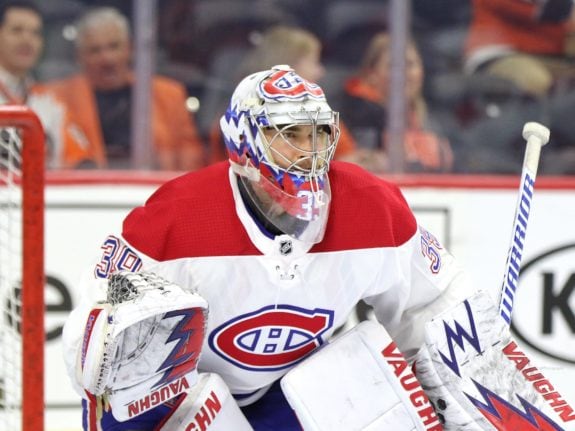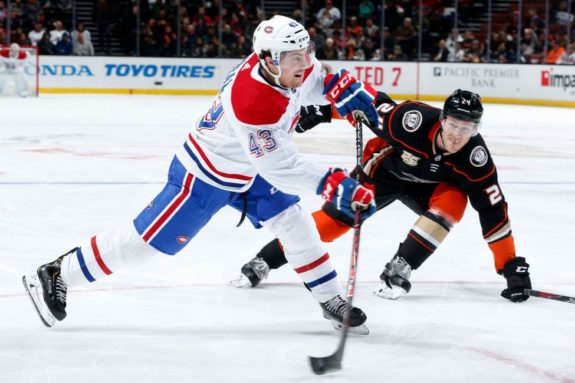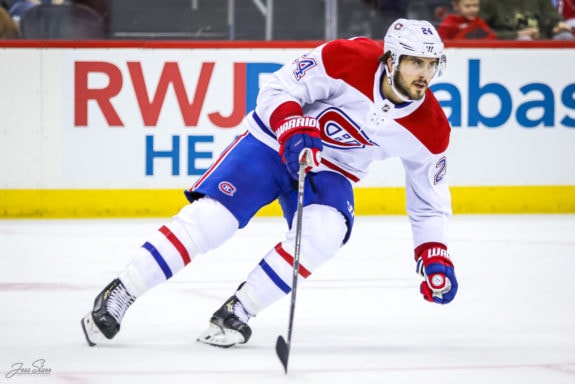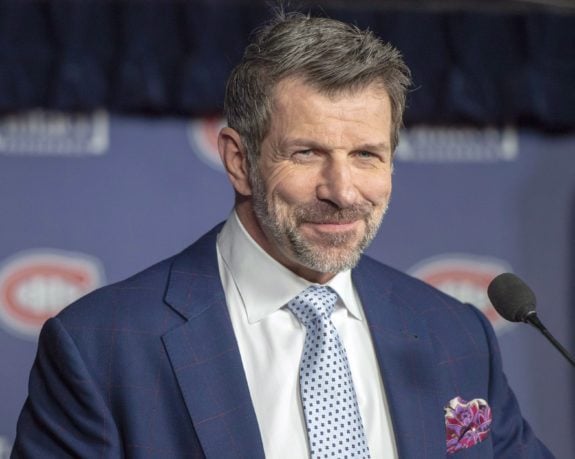The Montreal Canadiens proved these past playoffs that they can hang with some of the best teams in the NHL. Becoming one is harder than flipping a switch, though. It likely means flipping a few assets instead. Thankfully, the Habs and general manager Marc Bergevin have several pieces to help them get there. Here are their top trade chips this 2020 offseason.
5. Charlie Lindgren
It’s not that Charlie Lindgren is completely expendable, although the acquisition of Allen does drop him back in the American Hockey League on the depth chart, probably below Cayden Primeau. He can still help Primeau along, though. The problem is, Lindgren needs to go through waivers to get there.

Keep in mind, the Canadiens also have Michael McNiven to re-sign, even if only for depth purposes. The only difference is he’s a restricted free agent. While Vasili Demchenko is only signed for a single season and becomes unrestricted after that point (like Lindgren), the Habs just inked him a few months ago.
It makes much more sense that Lindgren would be the odd man out, even if it’s just for a mid-round pick in exchange so that the Habs don’t lose him for nothing.
4. Jordan Weal
Weal is also slated to become an unrestricted free agent in 2021. And, while he’s not the most marketable name, he is a useful depth player and probably has a role to play on an NHL team instead of in the AHL.

If you look back to the trade deadline, the Habs got fourth and fifth-round picks for Nick Cousins and Nate Thompson respectively. There’s no reason to expect Weal to fetch anything less, especially considering he does have offensive ability, putting up 10 points in 16 games immediately after Bergevin acquired him in 2019 (for Michael Chaput).
It would admittedly more be a case of addition by subtraction. It’s not so much because Weal isn’t useful, but more so because his roster spot is more useful if it were to go to someone else, like Ryan Poehling or Jake Evans.
3. Phillip Danault
The writing is on the wall, hinting at a potential Habs exit for Phillip Danault. He’s let his feelings be known on the matter, one year before becomes an unrestricted free agent. As a result, because he wants to continue to play an offensive role but one may not be available for him, Bergevin should at least consider trading him. There are caveats, though.

Bar none, Danault is the most attractive name on this list for the two-way game he brings to the table. He would be undeniably hard to replace, especially considering the Habs will be presumably looking to make it to the second round of the playoffs at least. You don’t traditionally look to trade your current No. 1 center under those circumstances, even if he may drop on the depth chart.
Danault’s value remains high though, because it would be through little fault of his own. He’s only 27 and remains a Frank J. Selke Trophy-caliber player. However, if he’s going to leave on his own, the Habs had better try and get something for him, specifically someone to replace him in the lineup, like an elite No. 3 center (plus, for it to be worth their while).
2. Max Domi
Max Domi isn’t more valuable than Danault. These past playoffs proved that. However, he is more expendable considering the logjam at center and at left-wing, the two positions Domi plays.
It makes sense that one of the two have to go at least. Since Bergevin has made it clear in so many words that Domi’s future with the Habs is unclear, he could find himself in a different uniform by the start of next season.
It’s not as simple as that though, because Domi needs to be re-signed, as a restricted free agent. Domi is still a marketable name on the trade market as a 25-year-old former 70-point scorer. And, keep in mind, the Habs acquired him under similar circumstance. Literally a day after the Habs acquired Domi for Alex Galchenyuk, they re-signed the former to his current two-year deal. Even though Galchenyuk was similarly on the outs with the Habs at the time, the fact that they got Domi in exchange should be seen as reason for optimism.
1. 2020 First-Round Pick
In spite of what Bergevin says aloud, it’s unlikely the Habs will get a player of the same caliber at No. 16 that they would have gotten at No. 9 at the NHL Entry Draft (had they lost to the Pittsburgh Penguins). Sure, it’s possible the player who gets picked at No. 16 ends up the better player between the two, but on paper that’s far from the case based on the prospects available in the projected top 10. As a result, the Canadiens should consider making it so they’re not the team who makes the pick.

A first-round pick is still a first-round pick. It’s a hot commodity in principle and, for the Canadiens, who arguably have one the best prospect pipelines in the league, they can afford to trade it, especially if it means addressing a hole on defense or at right-wing. Filling one or both is likely the difference between falling in or climbing a rung as they take that next step.